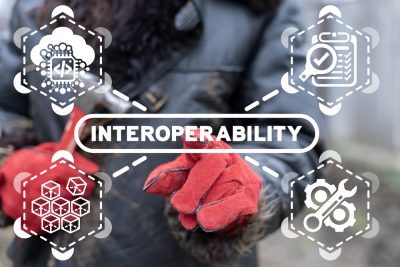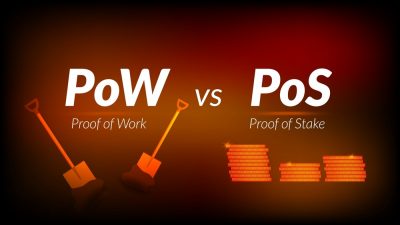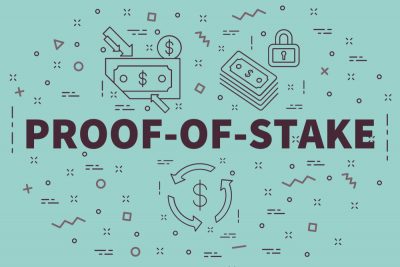Risk-Based Security called last year the worst year on record with more than 8 billion data records being affected. The increasing third-party control over personal data makes privacy no longer an option but a necessity. Businesses are competing with malicious actors, both from inside and outside, so the demand for innovation in data storage technology is the need of the hour.
Blockchain – the technology that generated hopes in terms of its applicabilityis now under the scanner. Data security was one such domain where experts predicted that blockchain technology would revolutionize the field. As technology became standard on the Internet, scrutinization brought several questions. The biggest question was transparency of data wasn’t good for all types of data, mainly sensitive user information as questioned by blockchain analytics firm Chainalysis.
Before we understand blockchain, we need to understand how consumer privacy works and what are the major factors leading to data leakage.
Making privacy jump
People are increasingly moving to the digital network, and with this, the concern of data protection and privacy is increasing at a major scale. Data is generating more revenue in the business with technology pushing to capture more of actions. Data is then captured and complied into databases to be sold or auctioned off to the highest bidder by browsers and social media giants.
Johnny Ryan, Chief Policy and Industry relations officer of Brave Browser during an interview with Cointelegraph, said in a statement that real-time-bidding is the biggest data breach in the world, with personal data that is being broadcasted to thousands of businesses around the world.
The growing number of data breaches is even highlighting the fact that most modern business models are based on the collection and sales of the users’ personal data. The most prominent social networking website Facebook and browser application Chrome are all set to sell their data to those businesses who are ready to pay for it. Facebook has affected data close to 540 million users, and multimedia platform Canva has affected close to 139 million users, is among the most eminent data breaches in 2019. Data is considered as the technology liability but a revenue-generating aspect for any organization.
Getting to know blockchain
Blockchain is considered to be confidential –proven data type and can become an ideal solution for businesses replacing the traditional storage systems. Most of the businesses are looking to develop private blockchain technology on which various access control restrictions can be implemented based on permissions.
Blockchain completely negates the need forthird-party applications to ensure better data safety, with an introduction of features like decentralized identity control assisted in the reduction of identity theft. A distributed nature of data assists in improving data security along with getting more efficiency on data.
In May 2019, Microsoft announced the use of distributed registry technology to create a decentralized identification system named as Decentralized ID or DID, based on the Microsoft Authenticator application. Developers had pushed for the blockchain technology as it is perfectly designed for storing personal information and eliminates the need for consent for the usage of private data. User identities will not be duplicated and distributed among different service providers.
Even as the emerging technology was placing its path for success, we saw it facing some of the major technology challenges.
Here are some Challenges with Blockchain adoption,
1. Implementing the Technology
Technology also faces some practical implementation issues, for example, a large or active ledger may act as a barrier for all the new participants as they would need to download a big historical data before joining the list.
When you consider a blockchain, consider Bitcoin, the time taken for a transaction after being initiated for bitcoin is between four and five minutes. In bitcoin for the transaction to take place, it needs a maximum of four to five minutes, while the maximum transactions that can be processed are seven transactions per second. If we compare this with real-world credit card transactions, Visa processes tens of thousands in a second.
2. Lack of standards and practices
Blockchain as a technology is still evolving, which means that there has been a lack of uniform standards that is crucial for any technology adoption. Any new technology needs standardization for a greater number of adoption; standards set the areas such as asset ownership and transfer as required.
Limited production environments are also negating the growth path, so a strong understanding for how blockchain can integrate with legacy and existing systems is necessary
3. Uncertainty with technology
Regulations haven’t been able to keep pace with the development of blockchain technology; any regulation recognizes blockchain applications provide a critical boost for the technology. The legislation will need to even deal with challenges of smart contracts that differ significantly from the traditional legal contracts as they self-execute and are autonomous.
Legal Recognition of blockchain is the biggest of a challenge it faces, with no central location; it’s still a bigger challenge for the business when dealing with such matters. Even specific legislation that needs to be written for blockchain with several competing approaches and standards are already present in the marketplace.
4. Awareness and Security
Understanding blockchain is the biggest challenge that a majority of businesses are facing. Currently, they either have little or no applicability knowledge about blockchain. Many consumers in the market who want to use blockchain are mostly skeptical about the viability of the technology. A critical mass of individuals and organizations are even willing to participate in blockchain experimentation to make the technology a viable solution.
In any new technology, there are several new risks that are being encountered every day. For example, blockchain requires every individual addition to list to furnish the complete ledger to operate. If the ledger is commercially sensitive, they would need the data to be encrypted before this.
Conclusion
Blockchain is still in the nascent stage of technology, with the need for development from one end and regulation to standardize the development across sectors and regions will be to bring uniformity with the application from the other end. Many governments are pushing for private blockchain technology to store public information to make the data usage safe and efficient. However, the challenge of technology still looms on the industry. To know more about how blockchain will change your business, you can download our latest whitepapers on Blockchain.






































































